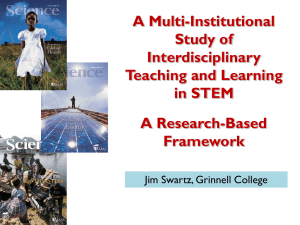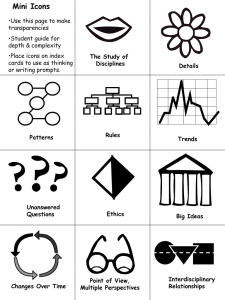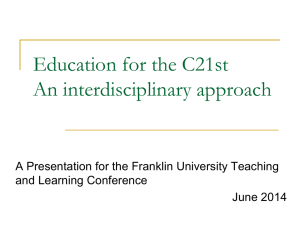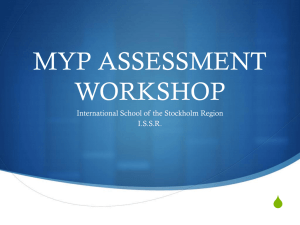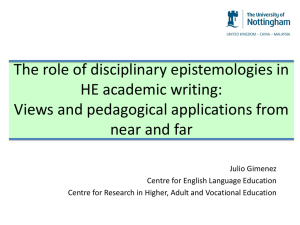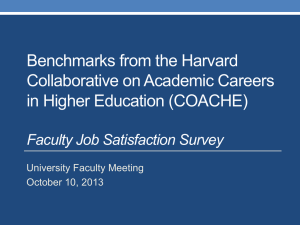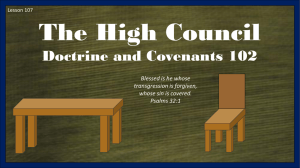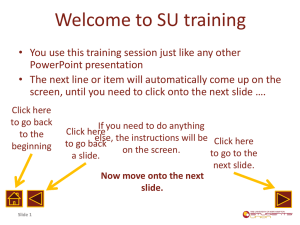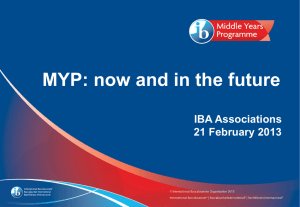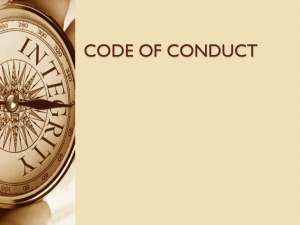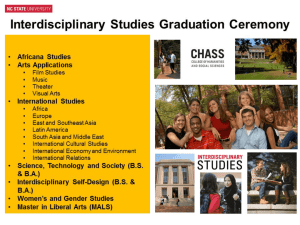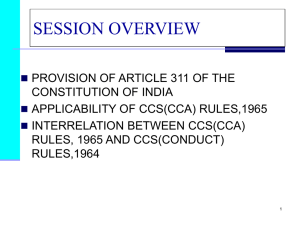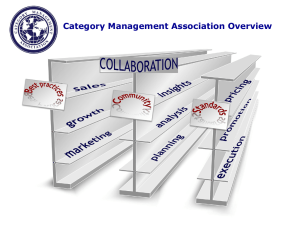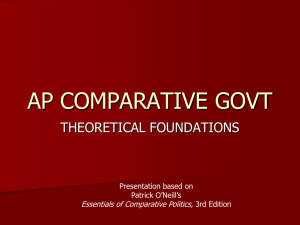ib- interdisciplinary and the myp model
advertisement
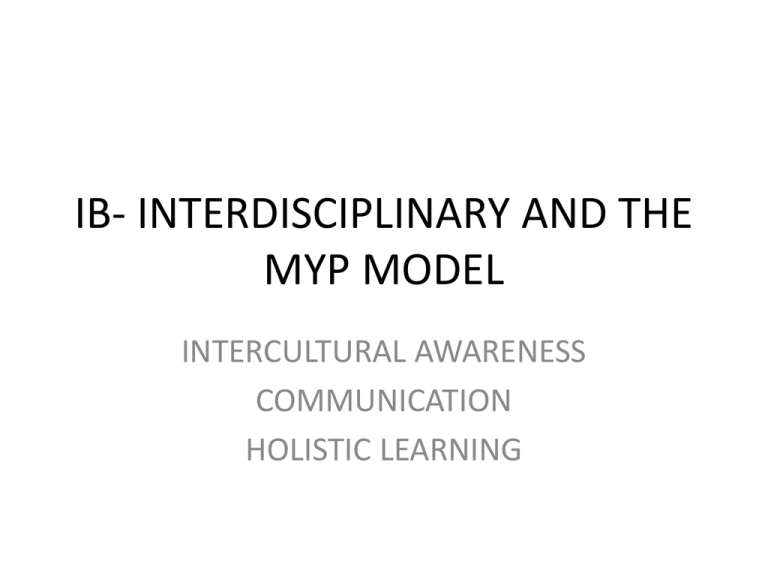
IB- INTERDISCIPLINARY AND THE MYP MODEL INTERCULTURAL AWARENESS COMMUNICATION HOLISTIC LEARNING The Following Help Foster Teachers Efforts "In the MYP interdisciplinary learning is generally defined as the process by which students come to understand bodies of knowledge and modes of thinking from two or more disciplines or subject groups and integrate them to create a new understanding." (Interdisciplinary teaching in the MYP Guide, 2010) "Interdisciplinarity is excellent if it is firmly rooted in disciplinarity. Each subject is not an end in itself but it must be an efficient tool. We must keep its identity and especially its own methodology. Only on that basis will we be able to construct a serious interdisciplinarity. Otherwise we will lead our students to mental confusion and superficial surveys." (Renaud, 1989) …”teachers engage in interdisciplinary work because they expect students to appreciate similarities and differences in the ways particular disciplines shed light on the world, much like theory of knowledge teachers in the Diploma Programme. Teachers motivated by this possibility value students’ capacity to reflect about the nature of knowledge in ways that prepare them as knowledge managers. For example, students may compare what constitutes evidence in art, history and biology as a way to enrich their understanding of the nature of evidence. Other teachers may examine the role of symbolism in theatre, music and visual arts seeking to inspire students’ original artistic productions.” INTERCULTURAL AWARENESS • Develops Students: Attitudes, Knowledge and Skills • Encourages Consideration of: Multiple perspectives, goes beyond fostering tolerance to developing Respect and Empathy Communication • Supports Inquiry and Understanding • Allows For: Reflection and Expression • Particular Emphasis on: Language Acquisition with multiple forms of Expression HOLISTIC LEARNING • Directly Addresses the Interdisciplinary Foundation • “links the subjects to foster a wide scope of understanding—concepts, ideas, and modes of thinking that offer a global view of situations and issues, are relevant to students and society, and can be employed by students in a variety of meaningful contexts.”(IB CW) Planning For Interdisciplinary work a five step process Making a Multifaceted QuestionStep 1 • A good multi-faceted unit question is relevant to students, teachers, and the societies in which we live. Because the MYP places students at the centre of their learning and recognizes the intellectual demands of interdisciplinary work, it is especially important that the questions be meaningful and engaging to students—they must connect with students' prior knowledge, life circumstances, and interests in developmentally appropriate ways. Similarly, powerful questions engage teachers’ own expertise, interests and commitments. Perhaps most importantly, the MYP's multifaceted unit questions are vividly relevant to the societies in which we live—capturing important aspects of the world and human experience typically framed in the areas of interaction. Tools and Disciplinary Understanding Selection of Disciplinary Understanding- Step 2 1. 2. 3. 4. Look into the subject aims and objectives that offer an overview of important understandings to be examined in each subject group. Decide which disciplines will best contribute to students' understanding of the multi-faceted question in the interdisciplinary unit. Use two criteria: strategically select disciplinary understanding and make sure the understanding is robust. Take from the subject aims and objectives the relevant specific knowledge, modes of thinking, concepts that student will need to address the unit question. Bear in mind four capacities that should be nurtured in students and reflected upon. • The purpose of disciplinary inquiry • An essential knowledge base • Disciplinary inquiry methods • Forms of communication Graphic Organizer-Integrating Developing Integrative Understandings Step 3 • Have clarity regarding the kind of connections you would like students to make and the learning opportunities they embody. An interdisciplinary integration can be described in terms of "the way we expect that disciplines, at a basic level, will come together in a given teaching design". In order to do this effectively it would be best if you: – identify one, two, maximum three core integrative understandings to target – consider integrative understandings as targeted learning goals – communicate explicitly to your colleagues and students the type of connections you seek and their relevance to the study of the multi-faceted unit – consider using these strategies to describe clearly the integrative connections: • share the specific contributions of each discipline to students' overall understanding of the topic • show exemplars such as inviting experts on the topic, or previous years' students who worked on this unit or showing how scholars produce integrative work • use integrative concepts as anchors by examining closely key complex concepts or phrases that embody the unit’s topic • Make sure integration advances and deepens students’ understanding of the multi-faceted unit question. It is more powerful when it is clearly addressing the purpose of the interdisciplinary inquiry. How can I make sure that disciplines will be successfully integrated to deepen students' understanding? • • • • To bring disciplines together meaningfully. You could start by: (not exhaustive-use your discipline experience) having the integrative goals clearly described, distinguish between potential forms of relationship among subjects/ disciplines brainstorming the kind of activities or performances of understanding to support the chosen integrative goals considering to explore these six ways to enable effective integration through: – artistic synthesis when engaging in creating an aesthetic interpretation of a non-artistic topic or issue – personal resonance when exploring a concept by examining how it has been interpreted in works stemming from multiple domains. This enables students to build a personal stance on the meaning of the topic chosen – crossover tool (-ing) when learning a concept or skill in one discipline and it can be applied across subjects – complex explanation when taking account of topics where multiple factors interact – contextualization when situating a particular concept, issue in a larger context (historical, social, etc) to throw more light into the issue under study – technological/ practical solution when working with a clear practical, concrete outcome in mind such as creating a product, finding a solution or developing an intervention. examples • Create informed historical monuments to revisit the question of how monuments, art woks and propaganda use visual symbols to tell a story about society. • Organize an awareness poster campaign addressing the problem under discussion. • Make a video clip/ a documentary addressing the problem under discussion to teach a younger class in the school. • Make the "Issue Year Book" to donate to the library showing a deep and thorough study of the issue and supporting the information with arguments and solid bibliography. Assessing multidisciplinary work • What is the MYP approach to assessment? The MYP offers a holistic approach to interdisciplinary work that is rooted in the definition of interdisciplinary learning; this approach guides teachers' attention to four criteria of the work. • Purpose: What is the purpose of this work? How clear, interdisciplinary, and focused through the areas of interaction is it? • Grounding: Is the student drawing on the subjects' knowledge and modes of thinking (concepts, skills, attitudes) accurately and appropriately? • Integration: Are the subjects in this work integrated in ways that deepen students' understanding? • Thoughtfulness: Is the student thoughtful about his or her work and the challenges and opportunities of making connections across subjects? • The recommended assessment approach builds on the subject criteria stipulated by the MYP and expands beyond them by inviting teachers to examine interdisciplinary student work holistically in a systematic way. How do I go about assessing interdisciplinary work? Some steps need to be followed: Some steps need to be followed: Purpose • Describe: What is the purpose of the work? – usually the teacher… • Assess: Is the purpose of the work clear? - Does the purpose invite/require an interdisciplinary approach? - Is the work clearly focused through an MYP area of interaction? • Guide: How can we support the student to gain clarity about the purpose of their interdisciplinary work and its relationship with the areas of interaction? Disciplinary grounding • Describe: Which disciplines inform this work in general? • Assess: Are subjects/disciplines selected in ways that fit the purpose of the piece or are they included in a forced manner? Is there evidence of the student developing mastery of key objectives in the subjects selected—that is, are knowledge, skills, methods, languages, values, used in accurate, rich and effective ways? • Guide: How can we further support students in their efforts to improve their understanding of core relevant knowledge, skills and attitudes in the chosen subjects? Assessing students' capacity to integrate what they learn is perhaps the most challenging step in assessing interdisciplinary work. This is in part because we are not used to looking closely at how perspectives connect. Missing evidence of integration calls upon teachers to revise their designs so that they can foster and support students to integrate. Integration • • • Describe: What are the key points of integration proposed in the work—that is, where are disciplinary perspectives clearly brought together in a phrase, metaphor, interpretation, or explanation? Assess: Are the integrations enabling students to advance their understanding effectively—for example, to produce more comprehensive descriptions, richer explanations, more creative and new interpretations, deeper explorations or effective solutions that benefit from the combination of perspectives? Guide: How can we further support students in their efforts to integrate available disciplinary insights to advance their understanding (if applicable)? Thoughtfulness • • • Describe: Does the work indicate that the student has reflected about the learning challenges and possibilities of bringing disciplinary insights together to address his or her purposes? Assess: Do the student's reflections about the process and outcome of the work reveal understanding of key aspects of doing interdisciplinary work—for example, the possibilities opened by integrative work, the insights gained along the way, the challenges of bringing disciplines together, the tension of satisfying conflicting standards? Guide: How can we further support the student to understand the demands of interdisciplinary work (if applicable)? What is the MYP approach to assessment? Current Approaches • Make a list of your current practices of assessment. • What are the questions or reflections you make before constructing an assessment? Space to write current practices: “Whether precise or more holistic, the assessment of student work must be grounded in samples of work that offer evidence of interdisciplinary understanding. It must be ongoing and informative to students. Whenever possible, interdisciplinary assessment should be collaborative as well as using multiple teachers' expertise on a particular student's work.” MYP- Holistic Approach rooted in Interdisciplinary work-4 criteria • PURPOSE: Usually teacher established, drives the work and sets the standards for assessment. • GROUNDING: How accurately students have drawn info from relevant discipline content? • INTEGRATION: Integrative nature of student understanding based on how the disciplines are sequentially brought together. • THOUGHTFULNESS: Student reflective piece- students consider accomplishments and limitations of their own work and the possibilities of disciplinary insights Step 1: Purpose Here teachers must examine three areas: • Describe: What is the purpose of the work? • Assess: Is the purpose of the work clear (whether explicit or implicit)? - Does the purpose invite/require an interdisciplinary approach? - Is the work clearly focused through an MYP area of interaction? • Guide: How can we support the student to gain clarity about the purpose of his or her interdisciplinary work and its relationship with the areas of interaction? Step 2: Disciplinary grounding • Describe: Which disciplines inform this work in general? • Assess: Are subjects or disciplines selected in ways that fit the purpose of the piece or are they included in a forced manner? Is there evidence of the student developing mastery of key objectives in the subjects selected—that is, are knowledge, skills, methods, languages, values, used in accurate, rich and effective ways? • Guide: How can we further support students in their efforts to improve their understanding of core relevant knowledge, skills and attitudes in the chosen subjects? Step 3: Integration • Describe: What are the key points of integration proposed in the work—that is, where are disciplinary perspectives clearly brought together in a phrase, metaphor, interpretation, or explanation? • Assess: Are the integrations enabling students to advance their understanding effectively—for example, to produce more comprehensive descriptions, richer explanations, more creative and new interpretations, deeper explorations or effective solutions that benefit from the combination of perspectives? • Guide: How can we further support students in their efforts to integrate available disciplinary insights to advance their understanding (if applicable)? Step 4: Thoughtfulness • Describe: Does the work indicate that the student has reflected about the learning challenges and possibilities of bringing disciplinary insights together to address his or her purposes? • Assess: Do the student's reflections about the process and outcome of the work reveal understanding of key aspects of doing interdisciplinary work—for example, the possibilities opened by integrative work, the insights gained along the way, the challenges of bringing disciplines together, the tension of satisfying conflicting standards? • Guide: How can we further support the student to understand the demands of interdisciplinary work (if applicable)? Which challenges can emerge from interdisciplinary assessment? • What exactly will the purpose of student inquiry be? • What specifically are the disciplinary insights to be developed? • In what ways should understanding be advanced? • What insights will students gain about the process of doing interdisciplinary work? Use ongoing informative assessment “…this approach to assessment is not just about evaluating students’ understanding; it is also about supporting and promoting it.” “formal and planned, for example, written comments on papers or project proposals or informal, occurring spontaneously during class discussion or one-on-one interactions with students) and foster peer feedback too (opportunities for students to assess each other’s work as well as to reflect on their own work, sometimes in the form of journals or reflective pieces.” Try to work with a collaborative assessment team In terms of assessment the collaboration matters because it enables teachers to draw on their particular areas of expertise and their specific subject goals to assess student work. Analyzing purposes, disciplinary grounding and thoughtfulness together based on several students' work entails an important professional development opportunity for teachers who begin to see how exactly their subject areas interact, overlap or complement one another. Clarity about such disciplinary connections also enriches assessment and instruction. Teachers are encouraged to consider the following assessment protocol • Structure teachers’ conversation about a particular student’s work to reveal strengths and growth opportunities. These steps include: 1. reminding the group of the questions to explore 2. looking at the evidence 3. describing the evidence 4. asking questions EXAMINATION OF STUDENT WORK ACTIVITY! • Materials – – – – PowerPoint Nuclear Bomb Victims Memorial By Brian N. MYP Subject guide objectives Reminder of Criteria Worksheet: Purpose, Disciplinary Grounding, Integration and Thoughtfulness. Method: Groups of no more than three; review project, criteria, look for Purpose, Disciplinary Grounding , Integration and Thoughtfulness Discuss and write your thoughts on the Worksheet.
